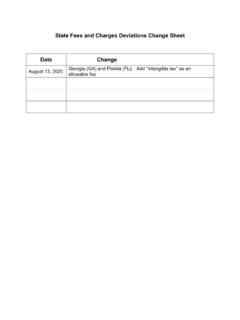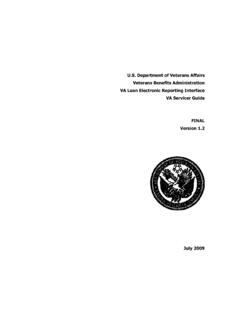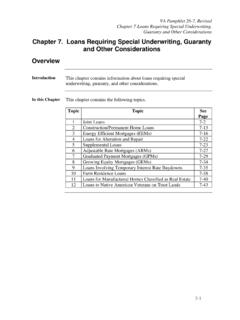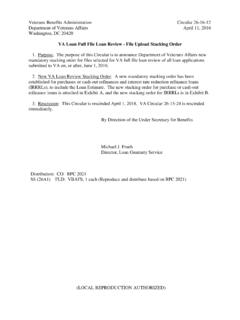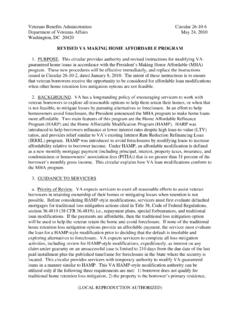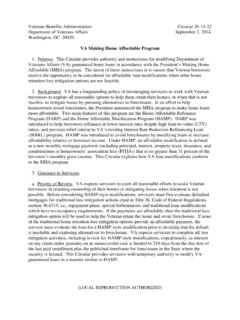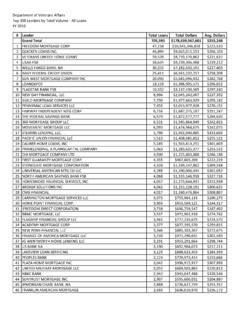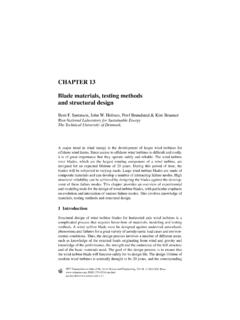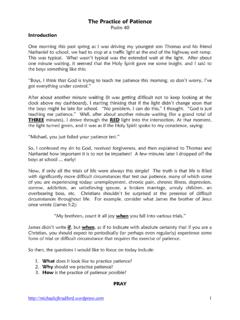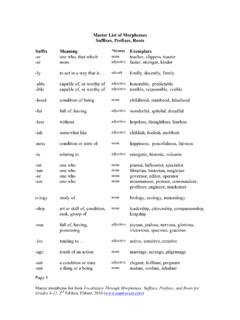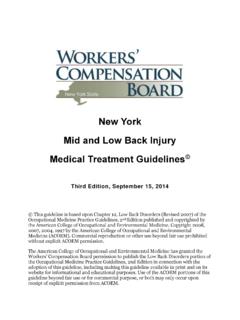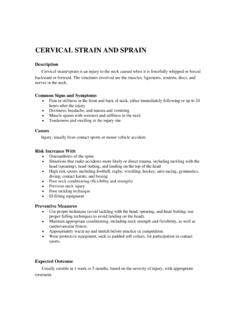Transcription of Spine Examination - Veterans Affairs
1 Spine Examination Name: SSN: Date of Exam: C-number: Place of Exam: A. Review of Medical Records: B. Present Medical History (Subjective Complaints): Please comment on whether the etiology for any of these subjective complaints is unrelated to the claimed disability. 1. Provide date, circumstances of onset and course since onset. 2. Report complaints of pain (including any radiation). a. Onset, description of pain b. Location and distribution c. Duration, frequency d. Severity (mild, moderate, severe). e. Have there been incapacitating episodes of back pain in the past 12 months? Duration? (Incapacitating episodes are episodes that require bedrest prescribed by a physician and treatment by a physician.). 3. Describe treatment - type, include dose for medication, frequency, response, and side effects. 4. Provide the following (per veteran) if individual reports periods of flare-up: a. Severity, frequency, and duration. b. Precipitating and alleviating factors.
2 C. Additional limitation of motion or functional impairment during the flare-up. 5. Describe associated features or symptoms ( stiffness, fatigue, spasms, weakness, decreased motion, numbness, paresthesias, leg or foot weakness, bladder complaints, ( urinary incontinence (how treated, appliance, absorbent material, number of times changed per 24 hours), urgency, retention (require catheterization), frequency (daytime voiding interval, nocturia)), bowel complaints ( obstipation, fecal incontinence (extent of leakage, pads?), erectile dysfunction). 6. Describe walking and assistive devices. a. Does the veteran walk unaided? Does the veteran use a cane, crutches, or a walker? b. Does the veteran use a brace (orthosis)? c. How far and how long can the veteran walk? d. Is the veteran unsteady? Does the veteran have a history of falls? 7. Describe details of any trauma or injury, including dates. 8. Describe details of any hospitalizations or surgery, include dates and locations if known.)
3 9. Functional Assessment - Describe effects of the condition(s) on the veteran's mobility ( , walking, transfers), activities of daily living ( , eating, grooming, bathing, toileting, dressing), usual occupation, driving. 10. History of neoplasm: a. Date of diagnosis, diagnosis. b. Benign or malignant. c. Type and date(s) of treatment. d. Date of last treatment. C. Physical Examination (Objective Findings): Address each of the following as appropriate to the condition being examined and fully describe current findings: 1. Inspection: Spine , limbs, posture and gait, position of the head, curvatures of the Spine , symmetry in appearance. 2. Range of motion a. Cervical Spine The reproducibility of an individual's range of motion is one indicator of optimum effort. Pain, fear of injury, disuse or neuromuscular inhibition may limit mobility by decreasing the individual's effort. If range of motion measurements fail to match known pathology, please repeat the measurements.
4 (Reference: Guides to the Evaluation of Permanent Impairment, Fifth Edition, 2001, page 399). i. Using a goniometer, measure and report the range of motion in degrees of forward flexion, extension, left lateral flexion, right lateral flexion, left lateral rotation and right lateral rotation. Generally, the normal ranges of motion for the cervical Spine are as follows: Forward flexion: 0 to 45 degrees Extension: 0 to 45 degrees Left Lateral Flexion: 0 to 45 degrees 2. Right Lateral Flexion: 0 to 45 degrees Left Lateral Rotation: 0 to 80 degrees Right Lateral Rotation: 0 to 80 degrees There may be a situation where an individual's range of motion is reduced, but "normal" (in the examiner's opinion) based on the individual's age, body habitus, neurologic disease, or other factors unrelated to the disability for which the exam is being performed. In this situation, please explain why the individual's measured range of motion should be considered as "normal".
5 Ii. Describe presence or absence of objective evidence of pain. iii. Describe objective evidence of painful motion, spasm, weakness, tenderness, atrophy, guarding, etc. iv. Describe any postural abnormalities, fixed deformity (ankylosis), or abnormality of musculature of cervical Spine musculature. b. Thoracolumbar Spine The reproducibility of an individual's range of motion is one indicator of optimum effort. Pain, fear of injury, disuse or neuromuscular inhibition may limit mobility by decreasing the individual's effort. If range of motion measurements fail to match known pathology, please repeat the measurements. (Reference: Guides to the Evaluation of Permanent Impairment, Fifth Edition, 2001, page 399). It is best to measure range of motion for the thoracolumbar Spine from a standing position. Measuring the range of motion from a standing position (as opposed to from a sitting position). will include the effects of forces generated by the distance from the center of gravity from the axis of motion of the Spine and will include the effect of contraction of the spinal muscles.
6 Contraction of the spinal muscles imposes a significant compressive force during Spine movements upon the lumbar discs. i. Provide forward flexion of the thoracolumbar Spine as a unit. Do not include hip flexion. (See Magee, Orthopedic Physical Assessment, Third Edition, 1997, Saunders Company, pages 374-75). Using a goniometer, measure and report the range of motion in degrees for forward flexion, extension, left lateral flexion, right lateral flexion, left lateral rotation and right lateral rotation. Generally, the normal ranges of motion for the thoracolumbar Spine as a unit are as follows: Forward flexion: 0 to 90 degrees Extension: 0 to 30 degrees 3. Left Lateral Flexion: 0 to 30 degrees Right Lateral Flexion: 0 to 30 degrees Left Lateral Rotation: 0 to 30 degrees Right Lateral Rotation: 0 to 30 degrees There may be a situation where an individual's range of motion is reduced, but "normal" (in the examiner's opinion) based on the individual's age, body habitus, neurologic disease, or other factors unrelated to the disability for which the exam is being performed.
7 In this situation, please explain why the individual's measured range of motion should be considered as "normal". ii. Describe presence or absence of objective evidence of pain. iii. Describe objective evidence of painful motion, spasm, weakness, tenderness, atrophy, guarding etc. a. Indicate whether there is muscle spasm, guarding or localized tenderness with preserved spinal contour, and normal gait. b. Indicate whether there is muscle spasm, or guarding severe enough to result in an abnormal gait, abnormal spinal contour such as scoliosis, reversed lordosis or abnormal kyphosis. iv. Describe any postural abnormalities, fixed deformity (ankylosis), or abnormality of musculature of back. c. Ankylosis If ankylosis is present, is it unfavorable or favorable? Unfavorable ankylosis is a condition in which the entire cervical Spine , the entire thoracolumbar Spine , or the entire Spine is fixed in flexion or extension, and the ankylosis results in one or more of the following: difficulty walking because of a limited line of vision; restricted opening of the mouth and chewing.
8 Breathing limited to diaphragmatic respiration; gastrointestinal symptoms due to pressure of the coastal margin on the abdomen; dyspnea or dysphagia; alantoaxial or cervical subluxation or dislocation; or neurologic symptoms due to nerve root stretching. Favorable ankylosis is fixation of a spinal segment in neutral position (zero degrees). Indicate the accompanying sign(s) and/or symptom(s). 3. Neurological Examination Please perform complete neurologic evaluation as indicated based upon disability for which the exam is being performed. Please provide brief statement if any of the following (a-e) is not 4. included in exam. For additional neurologic effects of disability not captured by a - e, ( bladder problems) please refer to appropriate worksheet for the body system affected. a. Sensory Examination , to include sacral segments (0 absent, 1 impaired, 2. normal). b. Motor Examination (atrophy, circumferential measurements, tone, and strength).
9 Standard muscle strength grading scale: 0 = Absent No muscle movement felt. 1 = Trace Muscle can be felt to tighten, but no movement produced. 2 = Poor Muscle movement produced only with gravity eliminated. 3 = Fair Muscle movement produced against gravity, but cannot overcome any resistance. 4 = Good Muscle movement produced against some resistance, but not against "normal resistance. 5 = Normal Muscle movement can overcome "normal" resistance. c. Reflexes (deep tendon (0 absent, 1+ hypoactive, 2+ normal, 3+ hyperactive without clonus, 4+ hyperactive with clonus), cutaneous, and pathologic). d. Rectal Examination (sensation, tone, volitional control, and reflexes). e. Lasegue's sign. 4. Non-organic physical signs ( , Waddell tests, others). D. Functional Loss With Use: Impairment of Spine function is determined by range of motion as reported in the physical Examination and additional loss of range of motion after repetitive use caused by the following factors: 1.
10 Pain 2. Fatigue 3. Weakness 4. Lack of endurance 5. Incoordination 5. Have the veteran move the affected spinal segment through repetitive active range of motion, as tolerated (at least 3 repetitions). After repetitive motion re-measure the range of motion of the affected spinal segment. Do any of the above factors cause any additional loss of range of motion? If so, record the re-measured range of motion and state the predominant factor causing the change in motion. If repetitive active range of motion cannot be done, state so and give the reason. E. For intervertebral disc syndrome 1. Conduct and report a separate history and physical Examination for each segment of the Spine (cervical, thoracic, lumbar) affected by disc disease. 2. Conduct a complete history and physical Examination of each affected segment of the Spine (cervical, thoracic, lumbar), whether or not there has been surgery, as described above under B. Present Medical History and C.

